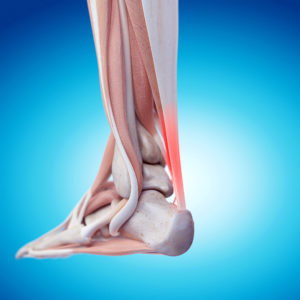 Tendon sheath inflammation is a condition that affects athletes and individuals who work in repetitive stress jobs. Left untreated, the problem can snowball into a larger issue, which is why it is important to treat the problem at the outset. Today, we take a closer look at the causes, symptoms and treatment options for tendon sheath inflammation.
Tendon sheath inflammation is a condition that affects athletes and individuals who work in repetitive stress jobs. Left untreated, the problem can snowball into a larger issue, which is why it is important to treat the problem at the outset. Today, we take a closer look at the causes, symptoms and treatment options for tendon sheath inflammation.
Causes and Symptoms of Tendon Sheath Inflammation
Above your tendons lie a protective sheath cover known as the synovium. This cover provides the joint with synovial fluid, which helps keep it lubricated and working properly. An injury to the tendon or the sheath can cause the production of this lubricating fluid to slow or fail, which can lead to inflammation and swelling. When this sets in, you’re dealing with tendon sheath inflammation.
As we alluded to above, tendon sheath inflammation is typically caused by an injury to the tendon, the sheath or sometimes a nearby muscle or bone. This injury can be the result of acute trauma, or it can come from years of repetitive overstress in the area. For example, some of the jobs with higher rates of tendon sheath inflammation include painters, carpenters, dentists and assembly line workers. All these jobs require you to be on your feet for hours on end while not actually moving much, which stresses the tendons in your feet or wrists.
Symptoms of tendon sheath inflammation include:
- Joint stiffness
- Joint swelling
- Joint pain
- Loss of range of motion in the feet or wrists
- Redness of the skin above the tendon
- Fever – which suggests you should seek immediate medical attention
Diagnosis and Treatment of Tendon Sheath Inflammation
A diagnosis of tendon sheath inflammation requires a visit to a foot specialist. If you walked into Dr. Silverman’s office and you suspected that you had tendon sheath inflammation, he’d start by asking you questions about your symptoms and conducting a physical exam to look for symptoms like redness or swelling. He may also ask you to participate in some range of motion exercises to see if the inflammation is inhibiting joint movement. This can typically help the doctor get to a conclusion over the condition, but if not they can conduct an MRI to confirm the diagnosis.
Thankfully, the vast majority of patients with tendon sheath inflammation can make a full recovery with conservative treatment. The main goals of treatment are to reduce pain, swelling and inflammation in the affected joint. The best way to do this is with a combination of treatments, including:
- Rest
- Hot or cold therapy
- Stretching exercises
- Massage therapy
- Electrical nerve stimulation (TENS unit)
- Bracing or immobilization techniques
- Anti-inflammatory medications
As the tendon heals, your doctor will likely slowly introduce physical therapy sessions to help strengthen the muscles near the tendon, as this will help protect the tendon from injury. In rare cases, if your inflammation returns, surgery may be a viable option. To prevent the possibility of surgery for tendon sheath inflammation, or to prevent permanent damage to the joint, visit a doctor or begin treatment at the first sign of symptoms.